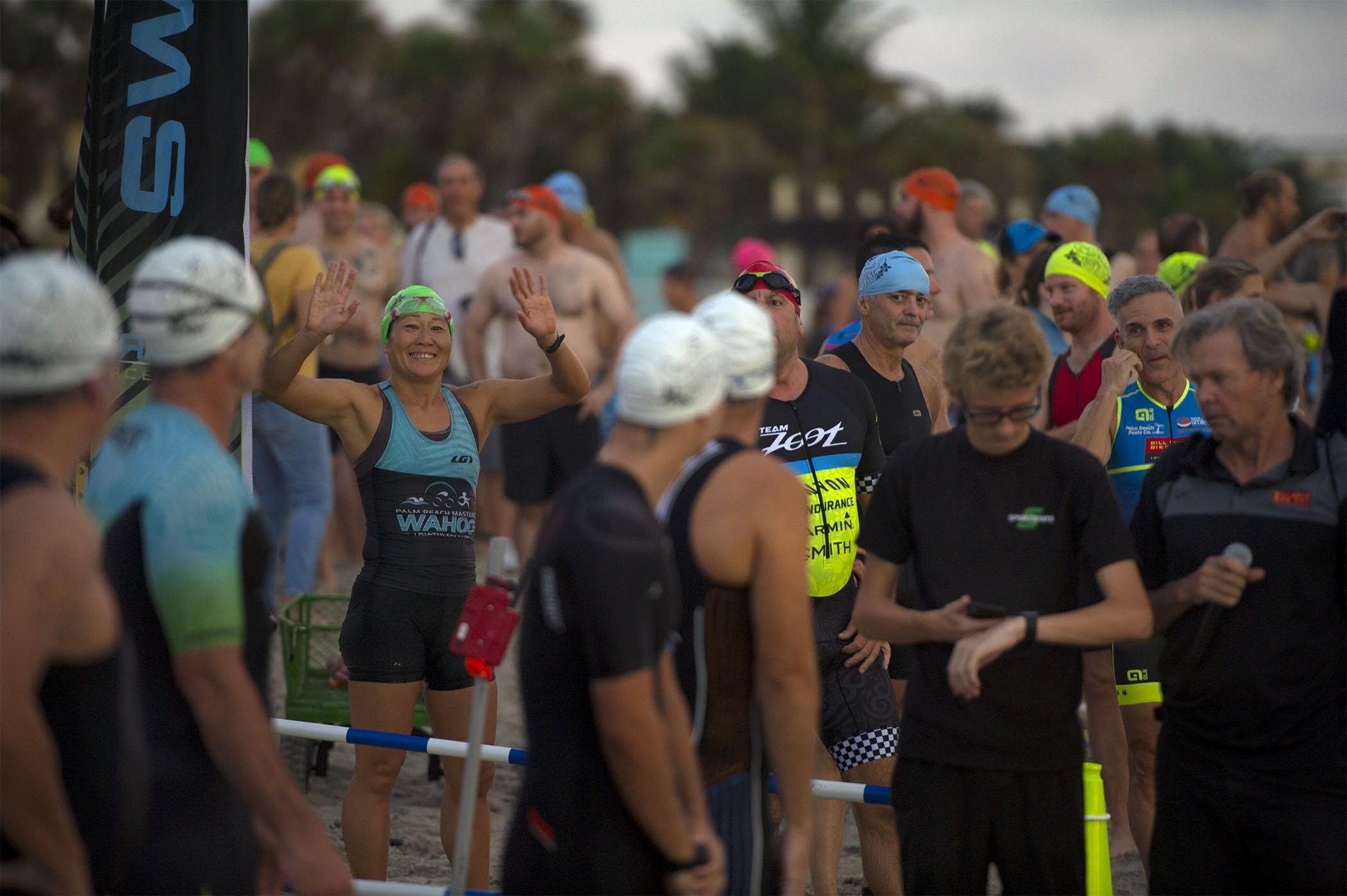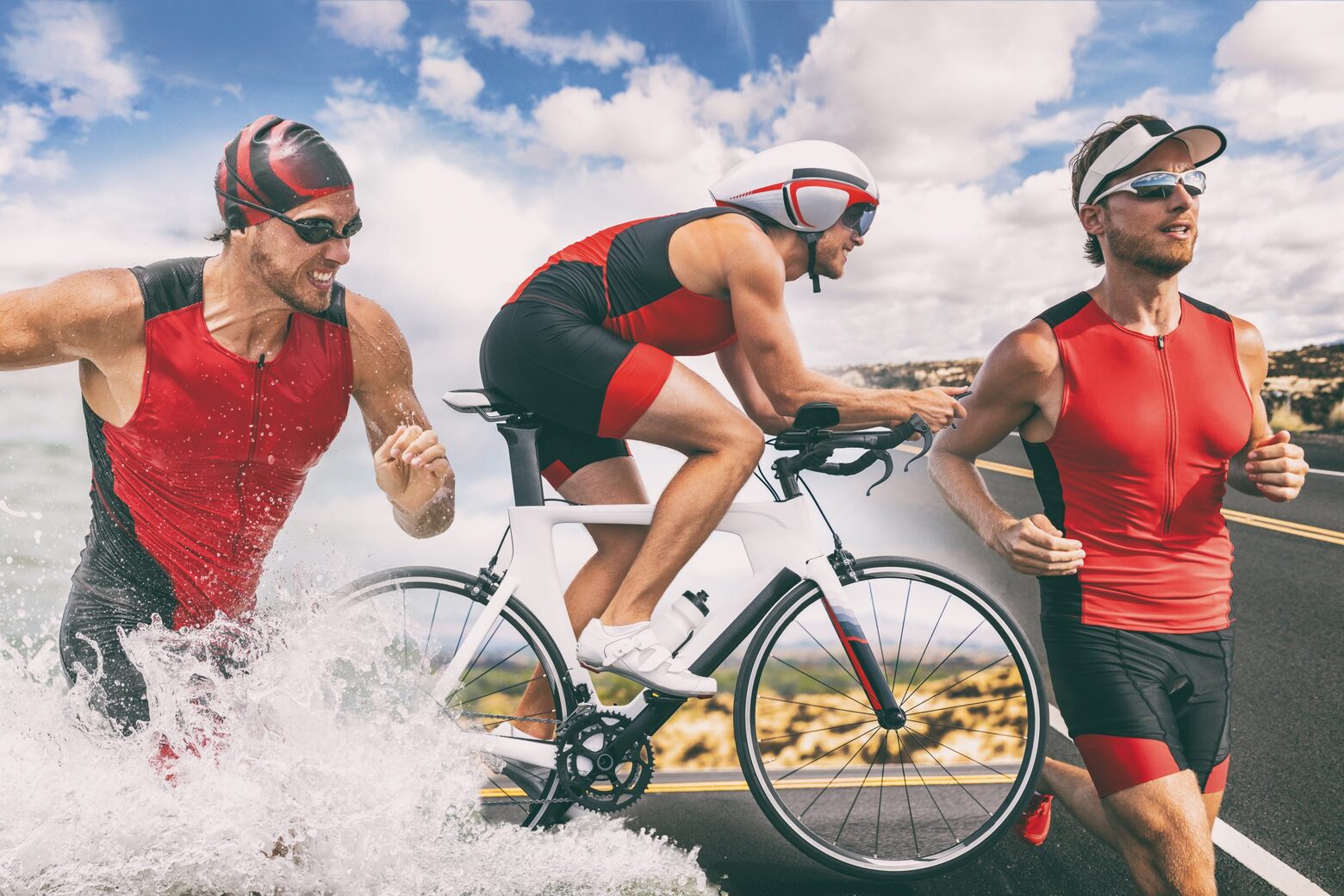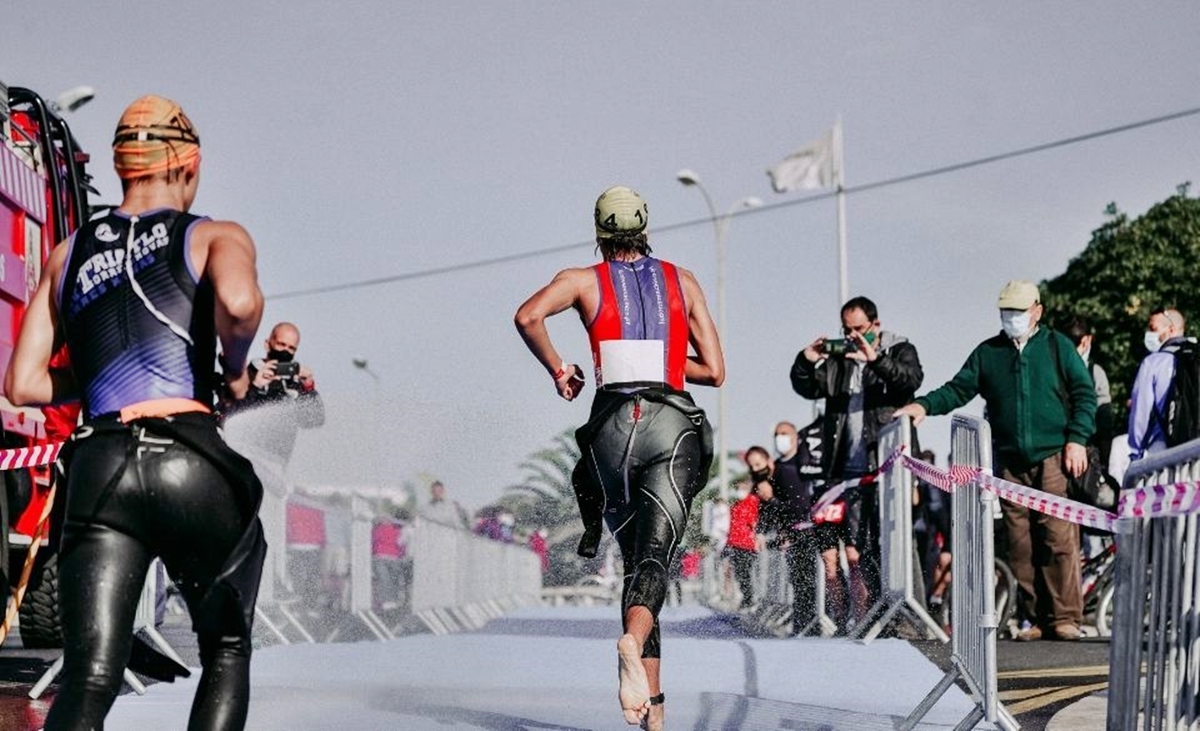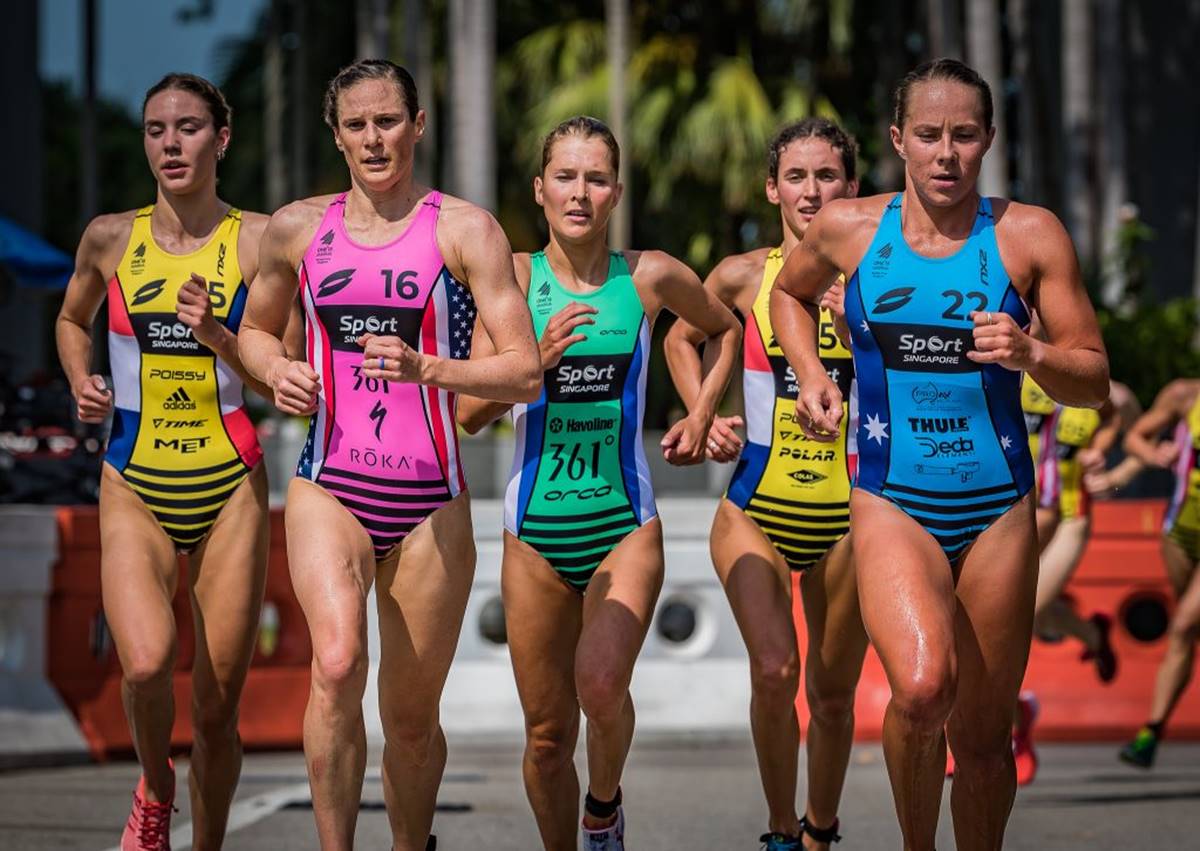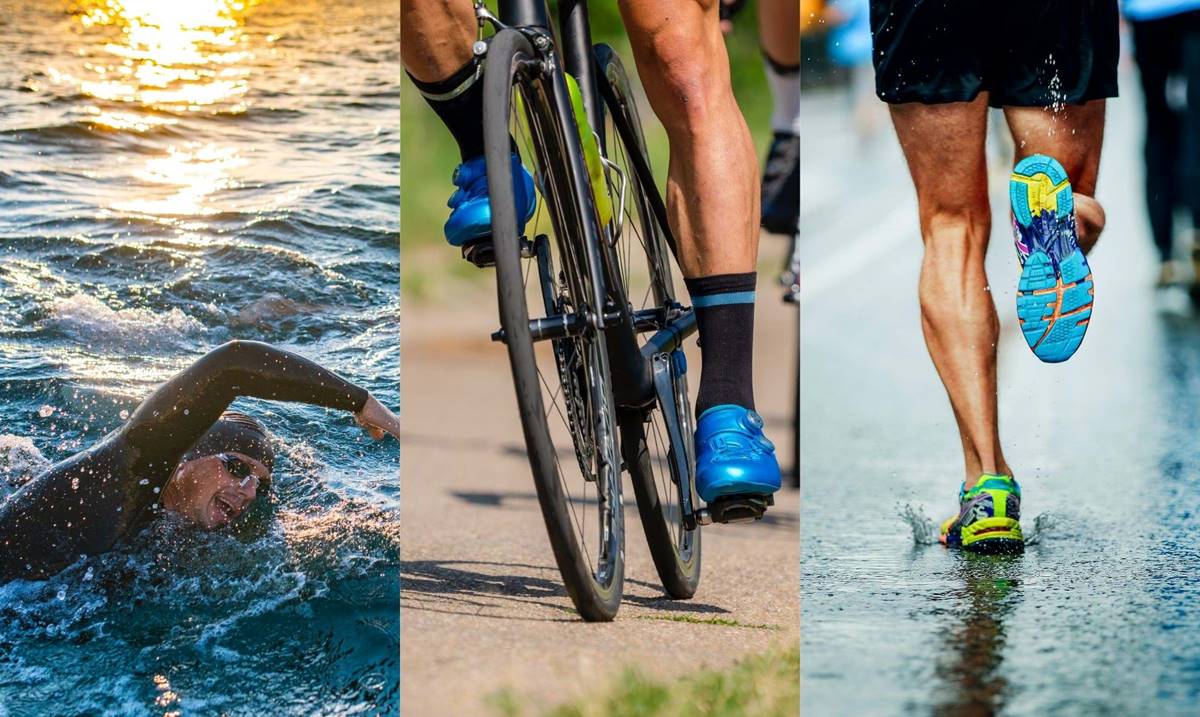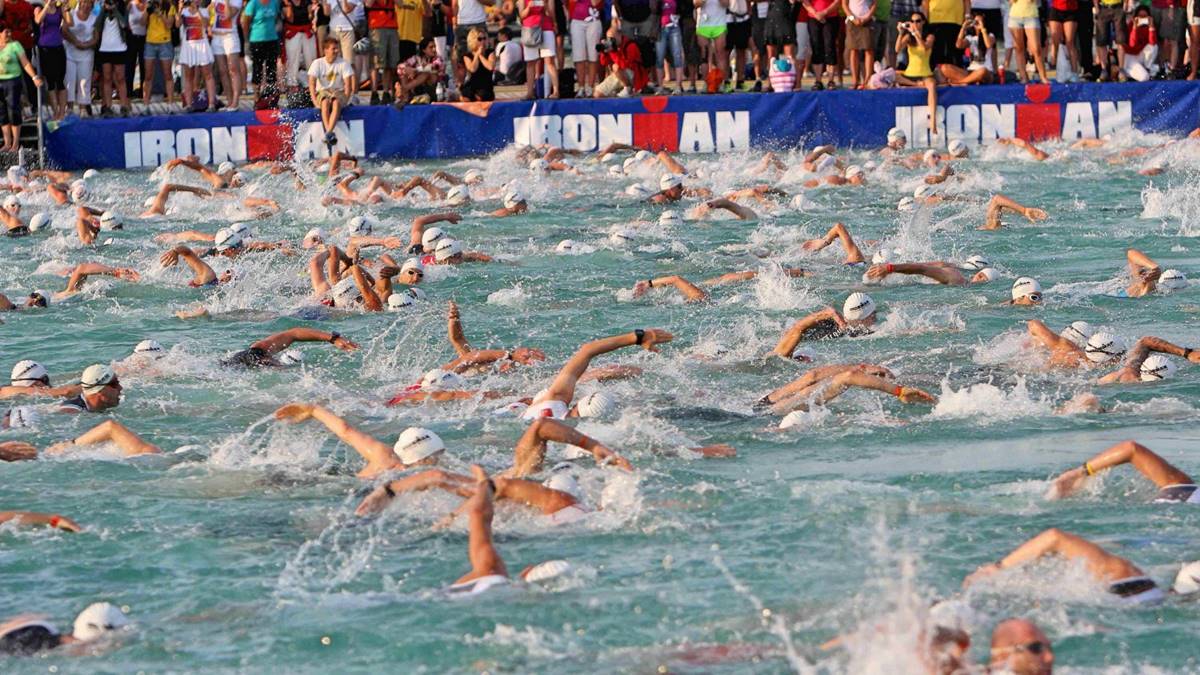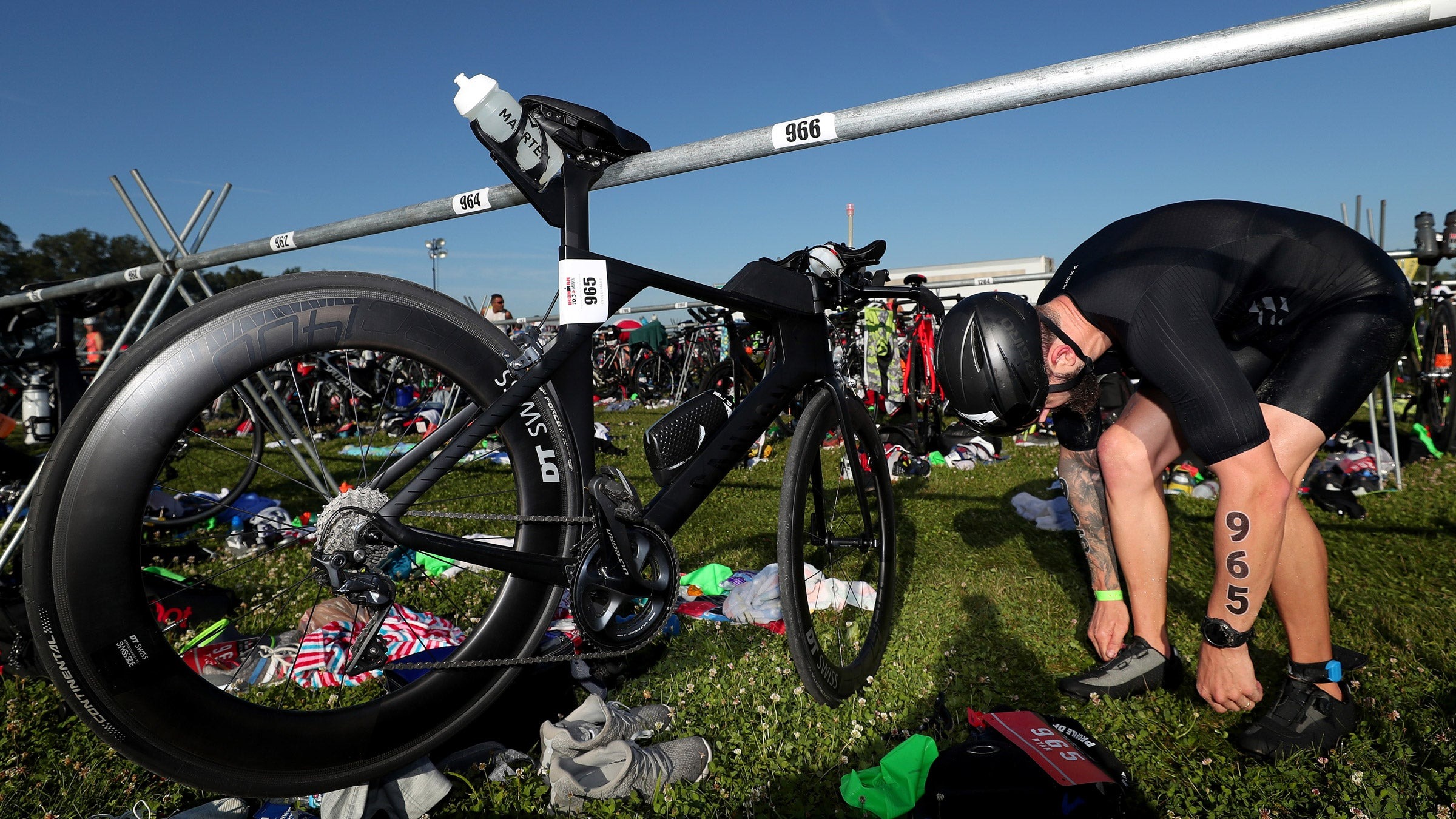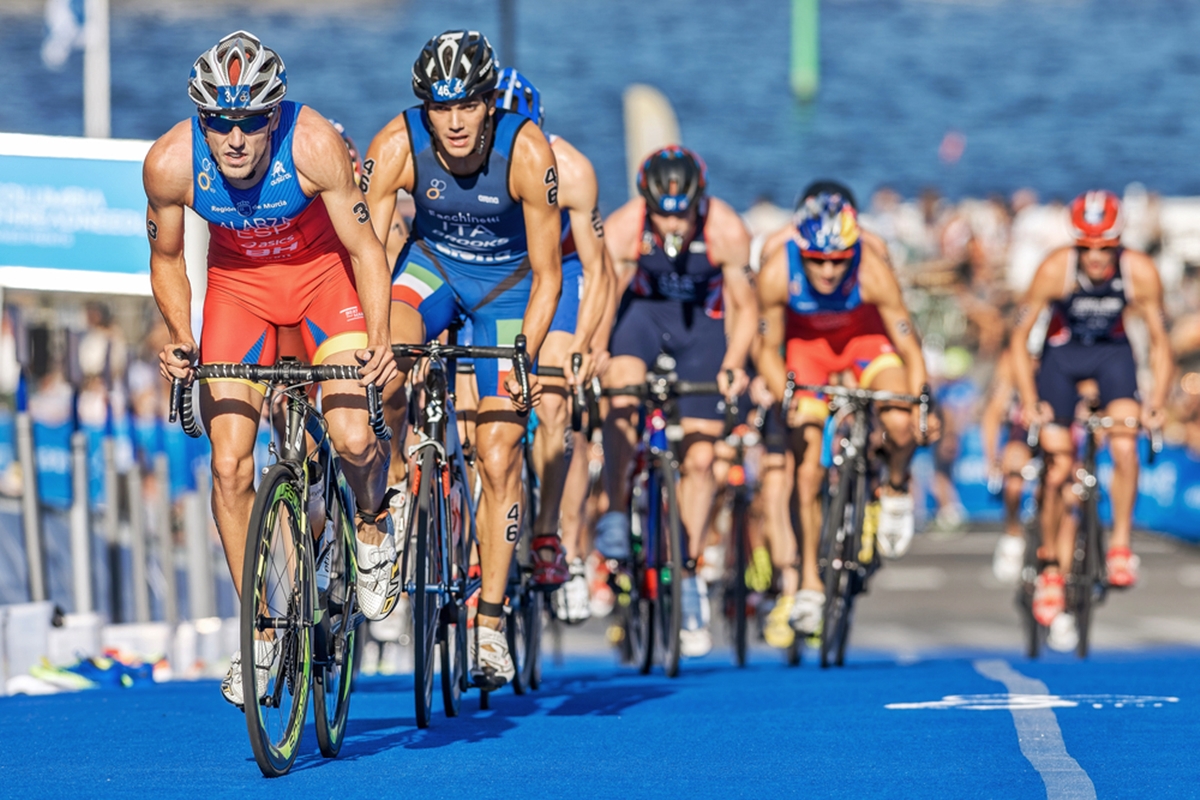Home>Misc>Featured>How To Keep Cap And Goggles Still During A Triathlon
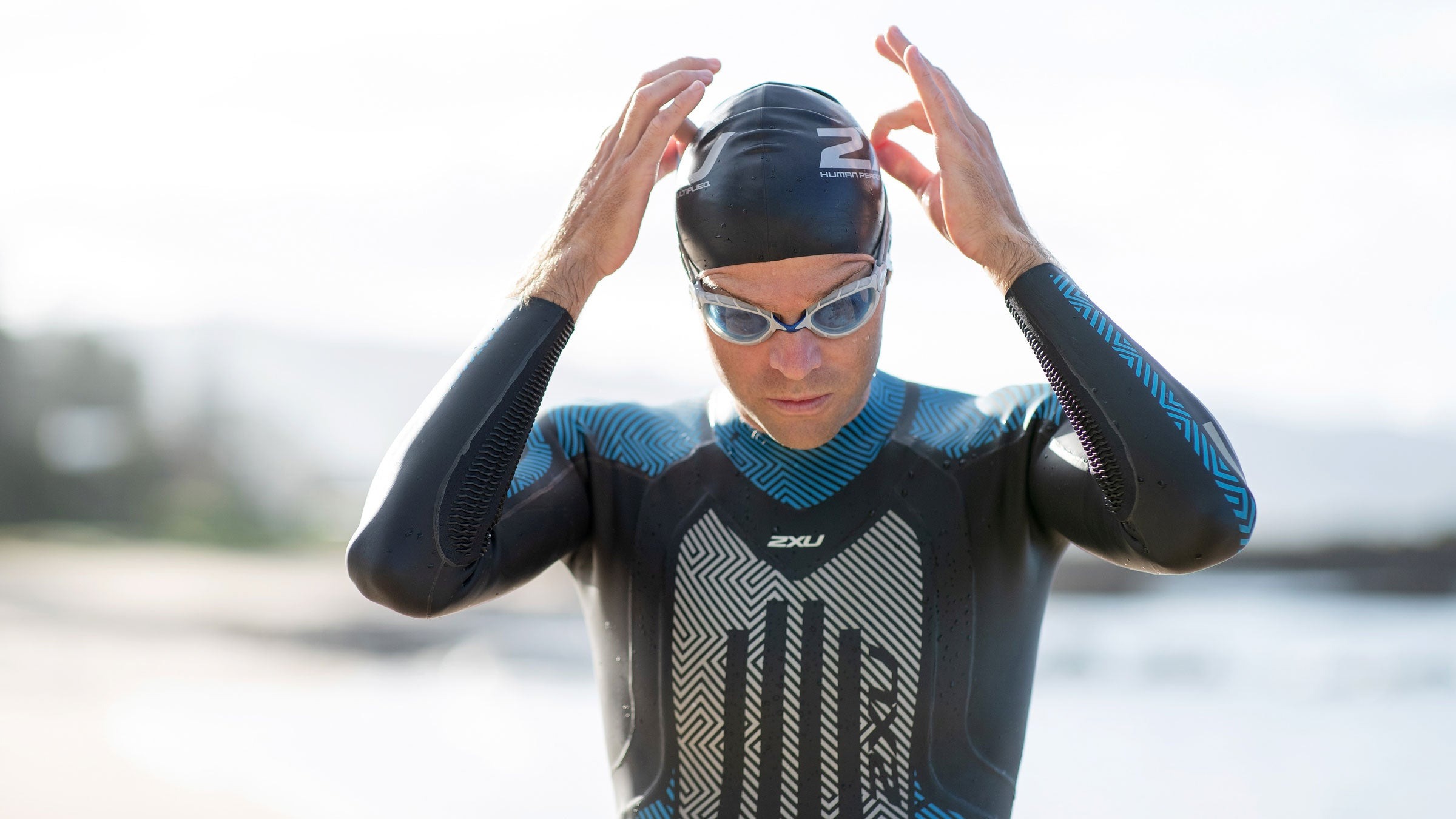

Featured
How To Keep Cap And Goggles Still During A Triathlon
Modified: January 2, 2024
Discover the best ways to keep your cap and goggles securely in place during a triathlon. Learn the top tips and techniques for preventing slippage and ensuring a successful race. Featured on our expert blog.
Introduction
When it comes to participating in a triathlon, every second counts. From swimming to biking and running, athletes know that even the smallest detail can make a significant difference in their overall performance. One area that often goes overlooked but can greatly impact an athlete’s experience is the stability of their cap and goggles during the swim portion of the race.
Having a secure and properly positioned cap and goggles not only provides clear vision but also prevents discomfort and distraction. Imagine swimming furiously, only to have your goggles slipping off or your cap constantly shifting, impeding your focus and slowing you down. To avoid such frustrating situations, it’s essential to know how to keep your cap and goggles still throughout the entire triathlon.
This article will delve into the importance of keeping your cap and goggles secure, offer guidance on choosing the right equipment, provide step-by-step instructions for proper adjustment, and reveal techniques to maintain cap and goggles stability during a triathlon. By mastering these skills, you can enhance your swimming performance, gain a competitive edge, and ultimately, enjoy a more successful triathlon experience.
The Importance of Keeping Cap and Goggles Still
When participating in a triathlon, swimmers must contend with various challenges in the water. From waves and currents to the frenzy of athletes jostling for position, maintaining stability is crucial. This extends to the equipment used, including the cap and goggles.
First and foremost, keeping your cap and goggles still ensures clear vision throughout the swim. If your goggles are constantly shifting or your cap is slipping down, your visibility will be compromised. This can lead to disorientation, hindered navigation, and a slower swim time.
In addition to visual clarity, stability also plays a role in comfort. A secure cap and goggles provide a snug yet comfortable fit, minimizing the risk of discomfort or irritation. It’s crucial to remember that a triathlon can be a grueling endurance test, and the last thing you want is distraction or discomfort interfering with your concentration.
Furthermore, keeping your cap and goggles still allows you to maintain a streamlined body position in the water. By preventing water from seeping into your goggles or under your cap, you reduce resistance and drag, enabling you to glide through the water more efficiently.
Lastly, stability in your cap and goggles can also boost your confidence and mental focus. When you’re confident that your gear is secure, you can dedicate your attention to your technique and race strategy instead of worrying about potential malfunctions.
Overall, the importance of keeping your cap and goggles still during a triathlon cannot be overstated. It affects your visual clarity, comfort, speed, and mindset. By ensuring your equipment remains in place, you can maximize your performance and enjoy a more successful and fulfilling race.
Choosing the Right Cap and Goggles
Choosing the right cap and goggles is a crucial step in ensuring their stability during a triathlon. Here are some factors to consider when selecting your swimming gear:
- Material: Look for caps and goggles made from high-quality materials that provide a comfortable fit. Silicone and latex are common materials for caps, while goggles often have frames made of durable plastic or silicone.
- Size and Fit: Proper sizing is essential for both caps and goggles. Caps should be snug but not overly tight, while goggles should create a watertight seal around your eyes without pressing too firmly on your face. Consider trying on different sizes or brands to find the best fit for you.
- Anti-Fog and UV Protection: Look for goggles with anti-fog coating to ensure clear vision throughout the swim. UV protection is also important to shield your eyes from harmful sun rays during open water races.
- Straps: Pay attention to the strap design and adjustability of the goggles. Opt for straps that are easily adjustable and secure, allowing you to fine-tune the fit according to your preference.
- Visibility: Choose goggles with a wide peripheral vision to ensure maximum visibility in the water. This is especially crucial when navigating through crowded swim courses or open water environments where sighting is important.
- Additional Features: Some caps and goggles come with extra features such as mirrored lenses, polarized lenses, or even built-in earplugs. Consider your specific needs and preferences to determine if these additional features would benefit you during the race.
Remember, everyone’s requirements and preferences may vary, so take the time to try out different options to find the cap and goggles that provide the best fit, comfort, and functionality for your triathlon needs.
Proper Adjustment of Cap and Goggles
Once you have chosen the right cap and goggles, it’s crucial to properly adjust them to ensure maximum stability. Follow these steps to achieve the correct fit:
- Cap Adjustment: Wet your hair or head before putting on the cap. This helps create a better grip between your cap and your head. Position the cap on your forehead, making sure it covers your ears and the back of your head. Pull the cap down firmly but not overly tight.
- Goggle Adjustment: Start by adjusting the strap length to fit snugly around the back of your head. Place the goggles over your eyes and press gently to create a seal. Make sure they sit comfortably and do not cause any discomfort or pain. Adjust the strap tension as needed to achieve a secure yet comfortable fit.
- Nose Bridge: Some goggles come with an adjustable nose bridge to accommodate different face shapes. Experiment with the nose bridge settings to find the most comfortable and secure fit for your face.
- Additional Considerations: Ensure that the goggles sit just above your eyebrows and do not block your vision. If needed, you can apply a small amount of anti-fog solution to the inside of the goggles to reduce fogging.
Remember, the key to proper adjustment is finding the balance between a secure fit and comfort. Your cap and goggles should feel snug but not uncomfortably tight. Take the time to adjust them correctly before your triathlon, and make any necessary tweaks during training sessions to ensure they stay in place throughout the race.
Techniques to Keep Cap and Goggles Secure During a Triathlon
Now that you have chosen the right cap and goggles and properly adjusted them, it’s time to explore techniques to keep them secure during the triathlon swim. Here are some effective strategies:
- Secure Cap Placement: Before starting the swim, make sure your cap is properly positioned on your forehead and pulled down securely. Take a moment to adjust any hair that might be sticking out, as loose strands can cause the cap to slip.
- Goggle Seal: Ensure that your goggles create a tight seal around your eyes. Press down gently on the goggles to ensure they form a watertight barrier. This will help prevent water from seeping in and causing discomfort or hindering your vision.
- Head Position: Maintain proper head position during the swim. Looking straight ahead with your eyes focused on the horizon or slightly downward will help minimize the chances of water splashing into your goggles or pushing your cap off.
- Sighting Technique: When sighting during open water swims, lift your eyes just above the water’s surface instead of lifting your head completely. This technique reduces the chance of your cap shifting or your goggles coming loose due to excessive head movement.
- Smooth Transitions: During triathlon transitions, handle your cap and goggles with care. Avoid pulling them off forcefully or jostling them around. Place your cap and goggles securely on your head and adjust them if needed before continuing to the next stage of the race.
- Practice in Similar Conditions: If possible, practice swimming with your cap and goggles in conditions similar to those you will encounter during the race. This can help you identify any potential issues and make any necessary adjustments beforehand.
By implementing these techniques, you can significantly increase the chances of keeping your cap and goggles secure throughout the triathlon swim. Remember to stay focused, maintain good technique, and make any necessary adjustments during the race to ensure maximum stability.
Preparing Cap and Goggles Before the Race
Preparing your cap and goggles before the race is an important part of ensuring their stability during the triathlon. Follow these steps to properly get them ready:
- Inspect for Damage: Before race day, carefully inspect your cap and goggles for any signs of damage, such as scratches, tears, or loose straps. If you notice any issues, consider getting them repaired or replacing them to avoid any unforeseen problems during the race.
- Pre-Wet: Just before the swim, give your goggles a quick rinse and wet your cap. This will help improve their grip and ensure a better fit once you put them on.
- Apply Anti-Fog: Apply a thin layer of anti-fog solution to the inside of your goggles and gently spread it around the lens. This will help prevent fogging, ensuring clear vision throughout the swim.
- Secure Cap Placement: Before lining up for the swim start, make sure your cap is securely positioned on your head. Double-check that it covers your ears and the back of your head properly to minimize the chances of it slipping during the swim.
- Goggle Adjustments: Check the fit of your goggles one last time, making any necessary adjustments to the strap tension to ensure a snug yet comfortable fit around your head. Be mindful to maintain the seal and avoid over-tightening, which may cause discomfort or leave marks on your face.
By properly preparing your cap and goggles before the race, you can enhance their stability and minimize the likelihood of any issues. Taking a few moments to ensure they are in good condition, pre-wetted, and adjusted properly will help you start the triathlon swim with confidence and focus.
Common Mistakes to Avoid
While knowing how to keep your cap and goggles still during a triathlon is essential, it’s equally important to be aware of common mistakes that can compromise their stability. By avoiding these pitfalls, you can ensure a smoother and more successful swim. Here are some common mistakes to steer clear of:
- Incorrect Cap Size: Using a cap that is too large or too small can lead to constant shifting and discomfort. Take the time to find a cap that fits snugly but comfortably on your head.
- Improper Goggle Fit: If your goggles are too loose or too tight, they will likely come off or cause discomfort during the swim. Adjust the strap tension properly to achieve a secure and comfortable fit.
- Not Adjusting Before the Swim: Neglecting to check and adjust your cap and goggles before the race can lead to unnecessary issues during the swim. Take a moment to ensure they are securely in place and make any necessary adjustments.
- Skipping Pre-Wetting: Failing to pre-wet your cap and goggles can result in less grip and a less secure fit. Spend a few seconds rinsing your goggles and wetting your cap just before the swim starts.
- Pulling on Goggles: Tugging or pulling on your goggles during the swim can cause them to shift or break the seal. Avoid touching them unnecessarily and focus on maintaining a steady swimming rhythm.
- Over-Tightening: While a snug fit is important, it’s crucial not to over-tighten your cap or goggles. This can lead to discomfort, headaches, or leaving marks on your face. Find a balance between security and comfort.
- Ignoring Repairs: If you notice any damage to your cap or goggles, such as a tear or a loose strap, address it before the race. Ignoring repairs can result in equipment malfunctions during the swim.
- Using Old or Worn-out Gear: Over time, caps and goggles can deteriorate, losing their shape, elasticity, and effectiveness. Replace them regularly to maintain optimal performance.
By avoiding these common mistakes, you can significantly increase the stability of your cap and goggles during the triathlon swim. Pay attention to the fit, make necessary adjustments, and keep your gear in good condition, ultimately enhancing your overall performance in the race.
Additional Tips for Cap and Goggles Stability
While following the proper techniques and avoiding common mistakes is crucial for cap and goggles stability during a triathlon, here are some additional tips to further enhance their security:
- Use a Swim Cap Liner: Consider wearing a swim cap liner underneath your cap to create an extra layer of grip and friction, helping to keep it in place during the swim.
- Secure Goggle Strap Under Cap: To prevent the goggle strap from slipping or getting caught on something during the swim, tuck the strap under your cap and position it securely against your head.
- Control Breathing Technique: Stay mindful of your breathing technique to minimize head movement. Excessive tilting or turning of your head can cause your cap or goggles to shift, so focus on steady and controlled breathing.
- Practicing Open Water Swimming: If your triathlon involves an open water swim, it’s essential to practice swimming in similar conditions. This allows you to become accustomed to currents, waves, and sighting, helping you maintain stability with your cap and goggles.
- Invest in Quality Equipment: Choosing high-quality caps and goggles from reputable brands can make a significant difference in their stability. Invest in gear that is designed for endurance events and has a track record of reliability.
- Regularly Clean your Goggles: After each swim, rinse your goggles with fresh water to remove any chlorine or salt residue. This helps keep the lens and sealing gaskets in good condition, ensuring a secure fit during future swims.
- Store Properly: When not in use, store your cap and goggles in a cool, dry place away from direct sunlight. This prevents them from becoming misshapen or damaged, allowing them to maintain their stability.
By incorporating these additional tips into your triathlon preparation, you can enhance the stability of your cap and goggles. Remember, it’s essential to find the techniques and strategies that work best for you through practice and experimentation, allowing you to swim confidently and comfortably during the race.
Conclusion
Keeping your cap and goggles still during a triathlon is vital for optimal performance and a hassle-free swim. By choosing the right cap and goggles, properly adjusting them, and implementing techniques for stability, you can enhance your swimming experience and improve your overall race performance.
Remember to select caps and goggles made from high-quality materials and ensure they fit properly to minimize shifting and discomfort. Take the time to adjust them correctly, finding the balance between security and comfort. Practice proper swim techniques, such as maintaining a steady head position and using effective sighting methods, to further enhance stability.
Additionally, be aware of common mistakes to avoid, such as using the wrong cap and goggle size, over-tightening, or neglecting necessary repairs. By addressing these issues beforehand and taking care of your equipment, you can prevent potential problems during the race.
Lastly, consider implementing additional tips such as using a swim cap liner, securing goggle straps under your cap, practicing open water swimming, and investing in quality equipment. These strategies can further enhance the stability of your cap and goggles, ensuring a smooth and successful triathlon swim.
Keep in mind that finding the techniques and strategies that work best for you may require some experimentation and practice. Be open to making adjustments and modifications as needed to achieve optimal stability and comfort. By mastering the art of keeping your cap and goggles still, you’ll be setting yourself up for a confident and enjoyable triathlon swim.
